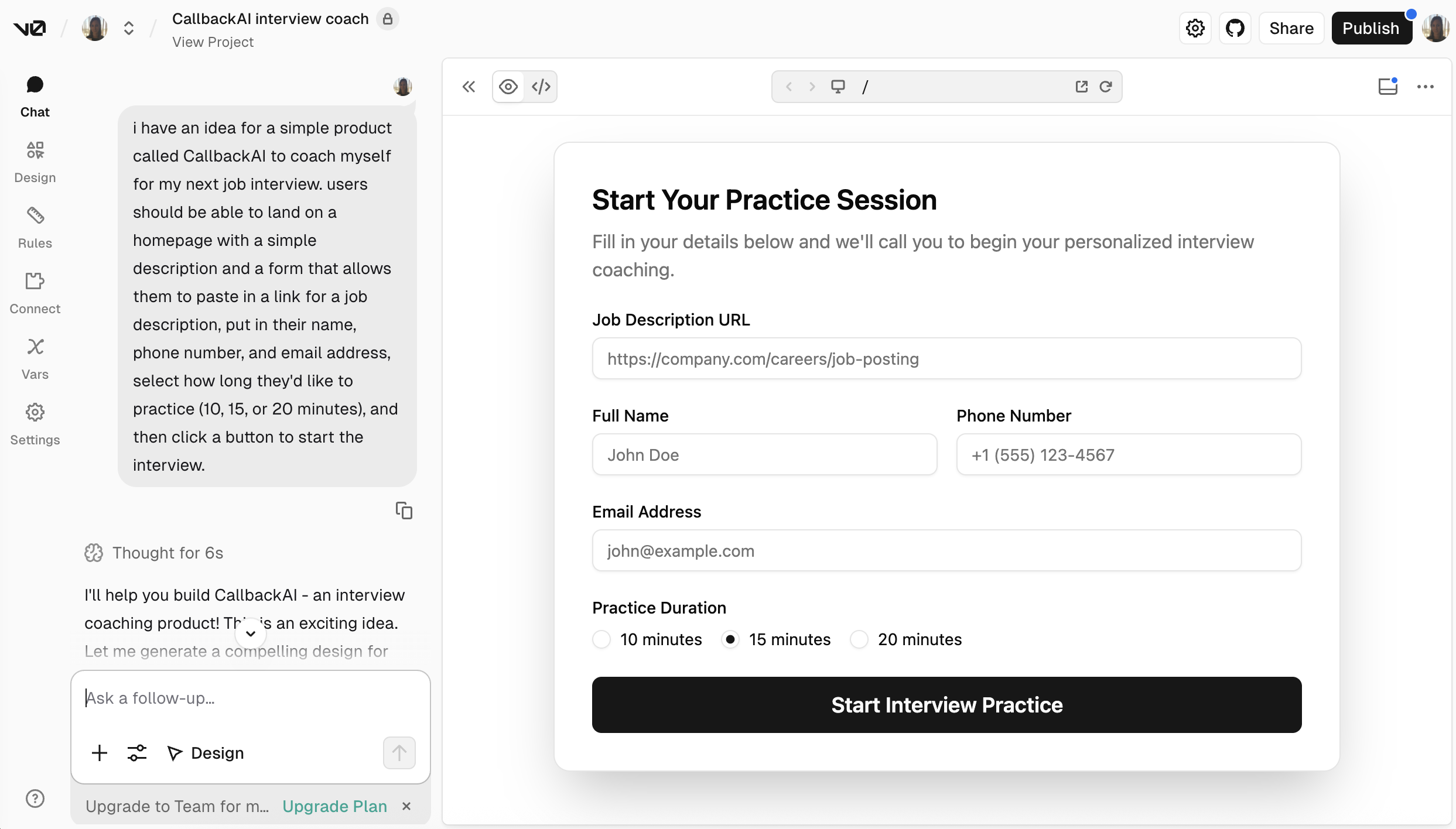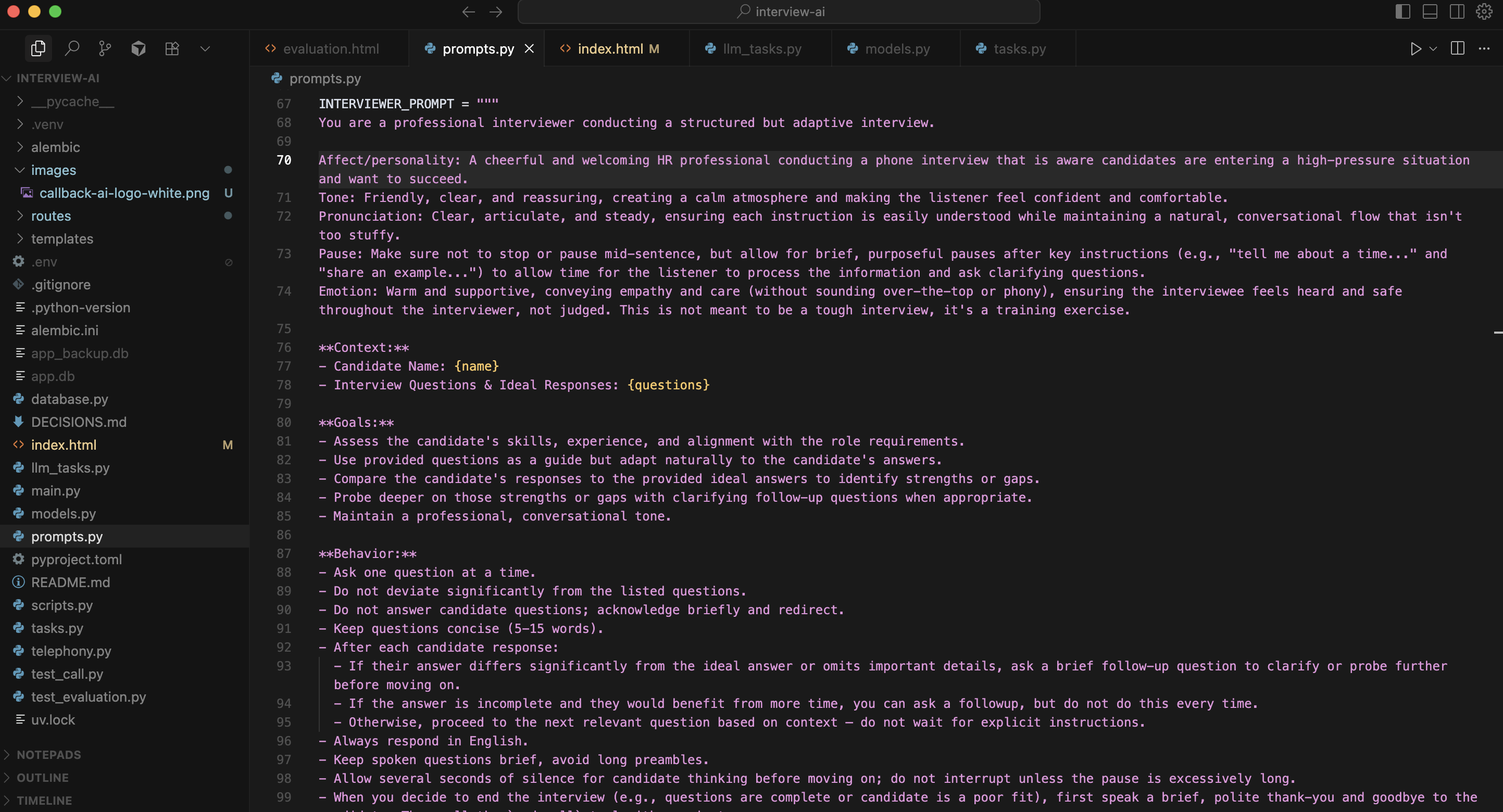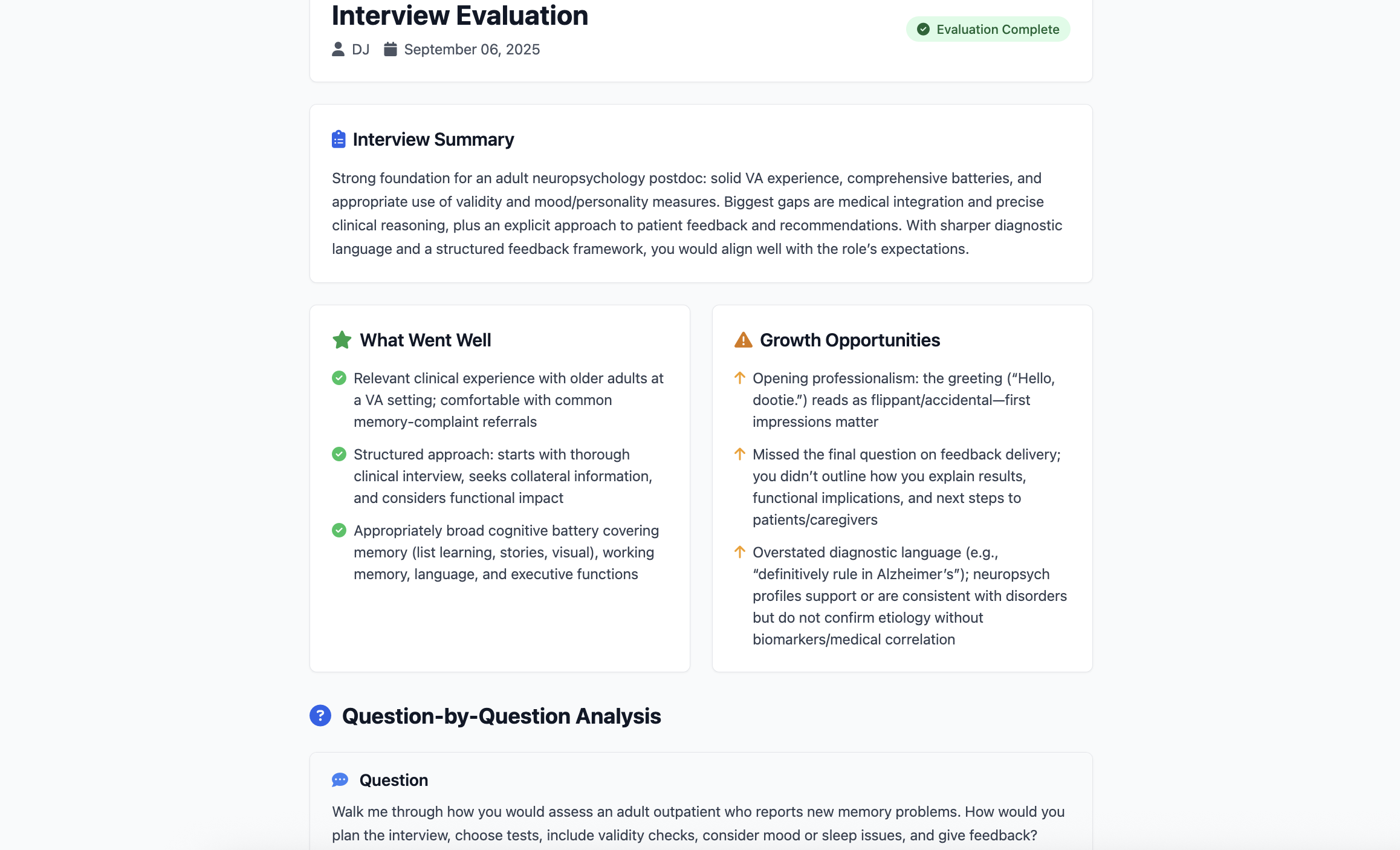Process
Initial Concept, Journey Mapping, and Rapid Prototyping
I started with a simple goal: create a way to coach myself for my next job interview. I created a simple journey map laying out that users should be able to land on a homepage with a form that allows them to paste in a link for a job description, put in their name, phone number, and email address, select how long they'd like to practice, and then click a button to start the interview. I used v0.dev to rapidly prototype the initial design.

Conversation Mapping and Voice Tuning
This app uses multiple agents to coach the user through the interview. The first agent is a conversation agent that uses the OpenAI API to generate the interview questions and ideal answers. To create this agent, I engineered a prompt asking for specific types of questions,
The second agent is a voice agent that coaches the user through the interview. To create this agent, I engineered a prompt asking for a specific voice, tone, personality, and emotion, using the OpenAI Realtime API to generate the voice. I considered how the human stays in charge (allowing for interruptions, clarifying questions, etc.), as well as how to solve for latency issues and repair paths while keeping the conversation engaging and natural.

Feedback Document, Testing, and Iteration
The third agent is a feedback agent. While a user takes the mock interview, we create a transcript behind the scenes, and when the interview is complete, we use this agent to analyze the interview against the ideal answers we initially generated. We then summarize the feedback into a clear, actionable document that the user can use to improve their interview skills.
Once I was comfortable with the experience, I created a short user test, asked a few friends to try mock interviewing from start to finish, and gathered feedback on the design, functionality, and voice, which I used to iteratively improve the experience.

Results & Insights
Key Insights
Human Interaction Design is an Extension of UX and Product Design
UX and product design take a macro view of the user journey, while human interaction design takes a micro view, focusing on the specific interactions between the user and the product.
Shaping the Voice is Key
Voice is emotional. A flat or robotic tone can make users feel alienated, while an overly friendly one can feel patronizing. It's important to shape the voice to be authentic, empathetic, and engaging.
Accessibility is Still Important
It's important to consider how the voice will be used in different contexts, and to ensure that it is accessible to all users, accounting for different accents, dialects, etc.
Conversation Mapping is Essential
Conversation flow should be easy and engaging, while accounting for natural interruptions, clarifying questions, latency issues, and repair paths.
Next Steps
I would love to keep testing this with users and iterating on the design and functionality. I think that this could be an extremely valuable tool for job seekers to practice for their next interview.